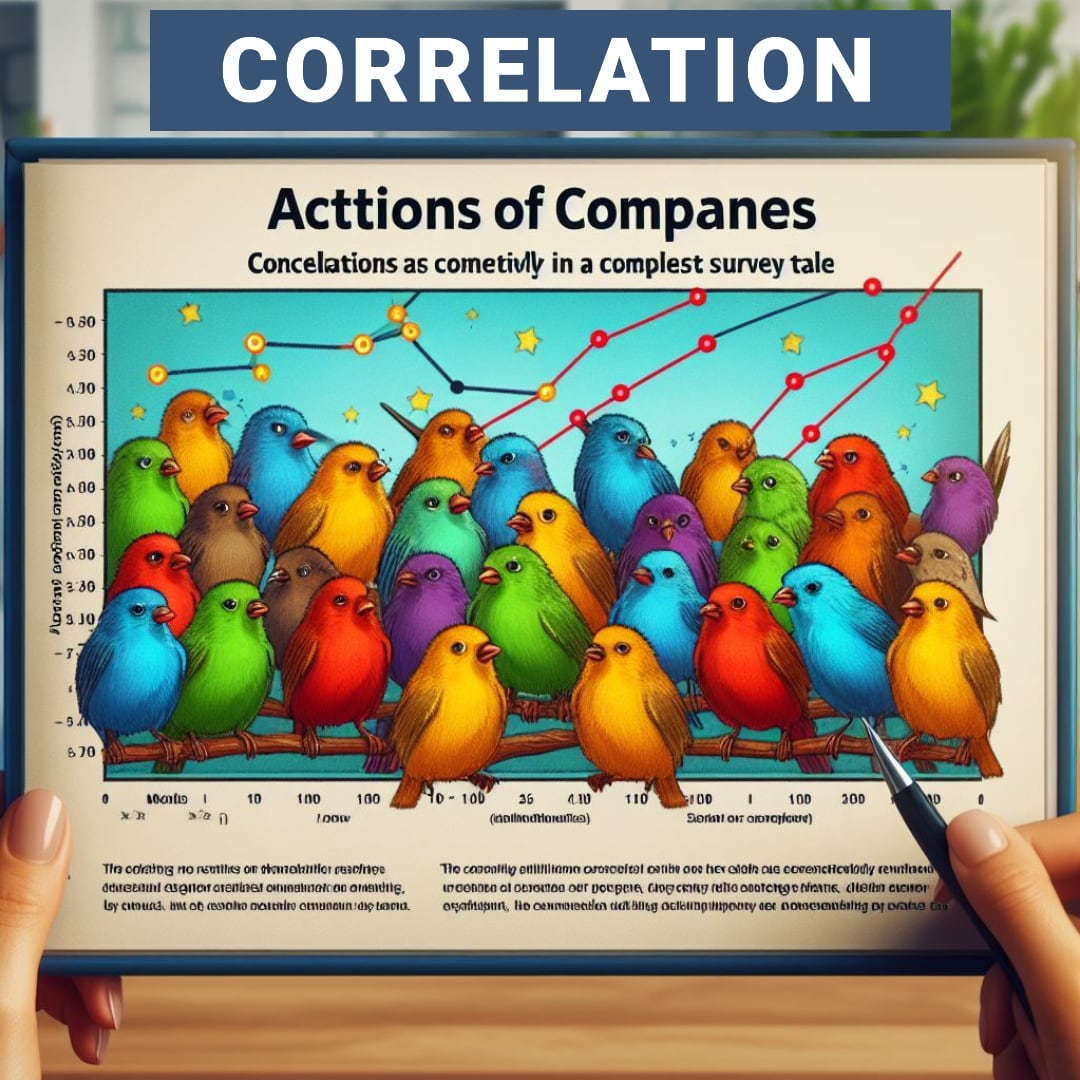
There were once colorful flocks of birds that lived together in a big forest. These flocks of birds had different ratios of beige birds, purple birds, red birds, blue birds, orange birds, green birds, yellow birds, and turquoise birds. These different proportions of colors influenced each flock's values, culture, and atmosphere. Their leaders made decisions based on the most common bird colors.
One day, after a bad storm, the flock leaders made tough choices to help their birds survive.
In Swift's flock, purple and green birds predominated. True to their adventurous nature, Swift sent the purple and green birds to find new food sources (unpaid vacation). She asked the orange birds to scout for materials to rebuild damaged nests because they loved to compete.
Feather's flock mainly had blue, who valued stability, and orange birds, who loved competition. The no-nonsense orange birds got right to work on repairs (no reduced staff). And the peaceful blue birds kept singing to lift spirits, so Feather changed nothing about their routines (nothing changed).
Hootie's flock had many sociable yellow birds who could always find a profitable solution for everyone and possessed a Win-Win-Win behavior. When the yellow birds' food storage was damaged, instead of reducing their rations (reduced salaries), Hootie asked the red birds to share the extra food they had gathered. So, yellow birds' food storage wasn't changed (no reduced salaries).
Over in Willa's flock, fun-loving turquoise birds were the majority. After the storm, Willa kept all her turquoise birds in their usual nests, singing songs since their cheerfulness helped the whole flock recover (nothing changed). But she had to ask the few red and orange birds to rebuild damaged nests belonging to elder beige birds temporarily.
Each diverse flock recovered based on its colorful culture and connections. But all birds worked cooperatively despite difficulties to continue thriving in the forest.
The SDTEST® gives clues to someone's motivational values. However, additional polls can provide more pieces of the puzzle.
Imagine also giving an "Actions of companies in relation to personnel in the last month (yes / no)" poll. It asks people about actions of companies in relation to personnel in the last month.
Now imagine 1'000 people who took both tests. You could match up each person's SDTEST® colors with their answers about actions of companies in relation to personnel in the last month.
Comparing tests gives an expanded picture of values in action. More puzzle pieces make the whole image more apparent!
Multiple tests can work together, like colors blending on a palette. Other polls reveal what engages your values, like what is the perception of the actions of companies in relation to personnel in the last month. Combined, they paint a richer picture of what motivates our thoughts and deeds.
Below you can read an abridged version of the results of our VUCA poll "Actions of companies in relation to personnel in the last month (yes / no)". The full results of the poll are available for free in the FAQ section after login or registration.
| Distribución | Nonnormal | Normal | Nonnormal | Normal | Normal | Normal | Normal | Normal |
|
Todas as preguntas
Todas as preguntas
Que accións se realizaron en relación ao persoal no último mes
| ||||||||
| Que accións se realizaron en relación ao persoal no último mes | ||||||||
| Answer 1 | - | Débil positivo 0.1180 | Débil positivo 0.0320 | Débil negativo -0.0369 | Débil negativo -0.1010 | Débil positivo 0.0408 | Débil positivo 0.0174 | Débil negativo -0.0303 |
| Answer 2 | - | Débil negativo -0.0047 | Débil negativo -0.0367 | Débil negativo -0.0023 | Débil negativo -0.0098 | Débil negativo -0.0105 | Débil negativo -0.0085 | Débil positivo 0.0605 |
| Answer 3 | - | Débil positivo 0.0299 | Débil negativo -0.0166 | Débil positivo 0.0171 | Débil negativo -0.0176 | Débil positivo 0.0349 | Débil negativo -0.0390 | Débil negativo -0.0068 |
| Answer 4 | - | Débil positivo 0.0355 | Débil positivo 0.0627 | Débil negativo -0.0088 | Débil negativo -0.0334 | Débil positivo 0.0191 | Débil negativo -0.0399 | Débil negativo -0.0141 |
| Answer 5 | - | Débil negativo -0.0104 | Débil positivo 0.0342 | Débil negativo -0.0400 | Débil positivo 0.0159 | Débil positivo 0.0260 | Débil negativo -0.0088 | Débil negativo -0.0138 |
| Answer 6 | - | Débil negativo -0.0210 | Débil positivo 0.0016 | Débil positivo 0.0422 | Débil negativo -0.0066 | Débil negativo -0.0046 | Débil positivo 0.0077 | Débil negativo -0.0164 |
| Answer 7 | - | Débil positivo 0.0262 | Débil positivo 0.0377 | Débil negativo -0.0222 | Débil negativo -0.0357 | Débil positivo 0.0061 | Débil positivo 0.0007 | Débil negativo -0.0013 |
| Answer 8 | - | Débil negativo -0.0145 | Débil positivo 0.0010 | Débil negativo -0.0123 | Débil negativo -0.0412 | Débil negativo -0.0362 | Débil positivo 0.0658 | Débil positivo 0.0333 |
| Answer 9 | - | Débil negativo -0.0540 | Débil positivo 0.0360 | Débil positivo 0.0332 | Débil positivo 0.0668 | Débil negativo -0.0527 | Débil negativo -0.0106 | Débil negativo -0.0241 |

